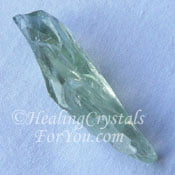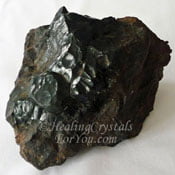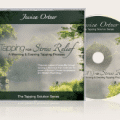Dr Charles Shepherd, Hon. Medical Adviser, ME Association.
Reflective comments

Dr Charles Shepherd.
ME Association reporting of the very sad circumstances surrounding the death of Merryn Crofts, along with the update from the Coroner’s Inquest that was held on Friday 18th May, has raised a number of important issues and concerns, particularly on our social media.
On a personal basis, I have been in contact with Merryn’s family over a considerable period of time. I have also been involved in making sure that Merryn’s very courageous decision to donate body tissue after her death to aid medical research into the cause of M.E. was carried out.
Everyone at the ME Association who has been involved with this very sad story has tried their best to make sure that our reporting, and the resulting press coverage, has been accurate, sensitive and reflects the views of Merryn’s family.
Role of M.E. in cause of death often considered unimportant
Getting things absolutely right in situations like this is never going to be easy and the subsequent press reporting has not suited everyone. However, I am sure that all would agree that it is a very sad and important event that reflects just how serious and devastating this illness can be.
And, given the fact that consideration of the role of M.E. at the time of death is often considered unimportant by pathologists and coroners, we just do not have accurate information as to how often M.E. plays a role in reducing life expectancy or is an actual cause of death.
Unless these issues are properly addressed by both the medical profession and coroners, we will never have accurate information relating to:
- how often M.E. is a primary cause of death and what pathological findings are relevant in such cases,
- how often M.E. is contributory factor to a death in someone with a primary diagnosis of M.E.,
- what effect M.E. has on overall life expectancy in relation to different sub-groups involving both symptom profile and illness severity.
It is also important to note that in our current state of knowledge, fatalities in people with M.E. are small in number. Even in those with severe M.E. where death might be the result of medical factors that are associated with, for example, prolonged immobility, or treatments (like powerful painkillers), or interventions (like tube feeding) that form part of management.
It should also be noted that the outlook for children and young people with M.E. is far better than for adults. Many children and adolescents do make significant improvements in health over the course of time. Some even return to full normal health.
“The recording of deaths in people with M.E. is unsatisfactory…”

Merryn Crofts before M.E.
However, the recording of deaths in people with M.E. is unsatisfactory.
The current situation clearly highlights the need for more research involving people at the severe end of the spectrum, especially with the sort of gastrointestinal and nutritional problems that can occur.
It also reinforces the need for proper and thorough investigation at the time of death.
But there are also theoretical reasons – for example, the link with low blood pressure in M.E. – which could play a role in increasing life expectancy, especially for those who are not in the severe category.
M.E. is also likely to involve a range of sub-groups linked to both clinical presentations and underlying disease processes that are present in individual cases.
So, life expectancy in M.E. is a complex and uncertain issue where lack of information makes it difficult to draw any firm conclusions.
Media reporting
John Siddle, who deals with the press and media at the ME Association, attended Merryn’s inquest. He then produced a detailed and sensitive report on the findings which was circulated to the press (below).
We believe it was important to notify the press about Merryn’s early and tragic death – which has also formed the basis for the BBC Newsbeat documentary – as well as the findings from the inquest.
The inquest received detailed coverage in several national newspapers, including the Daily Mail and the Sun, and most recently, the Times (see below). The articles were sympathetic and accurate – apart from some of the background facts about M.E., which were not supplied by the ME Association.
- Daily Mirror: ‘Young woman bed-bound for three years before dying of disease that some insist is all in the mind’
- Daily Mail: ‘Drama student, 21, was killed by ME rules coroner even though some say condition is all in the mind’
- The Sun: ‘Young Star’s Tragedy: Wannabe actress Merryn Crofts has become only the second person in Britain to die from ME’
- The Times: ‘ME sufferer who was dismissed as hysterical vindicated in death.’ [Paywall]

Merryn was just 21 years old when she died from M.E.
Pathology of M.E.
The comments and statements from the various health professionals who were involved with Merryn, and who attended her inquest, also contain some interesting and important observations.
In particular, the information from the pathologist regarding inflammation in the ganglia (part of the nervous system) – as this may link with the other finding of dorsal root ganglionitis that has been reported in previous post mortems on people with M.E. (see the research paper abstract below).
Without having more information from the inquest, it is difficult to comment further at this stage about the precise role of M.E. in the causation of Merryn’s death.
And, as her post mortem tissue is still being examined at Addenbrooke’s Hospital in Cambridge, (where M.E. post mortem research is being carried out and funded by the ME Association Ramsay Research Fund) it would not be right to do so until this information becomes available.
Some preliminary findings from previous post-mortems that have been carried out on people with M.E. were reported by the post mortem research group in The Journal of Neurological Sciences. A summary of these findings can be read below (and in the research section of our website).
I have also spoken to the BBC in relation to the Newsbeat documentary. The programme obtained some official information on cases where M.E. has been mentioned on a death certificate. I will arrange for this information to be published in due course.
Finally, our thoughts remain with Merryn’s family at what is another very difficult time for them.
Thank you.
More information
Pathology of Chronic Fatigue Syndrome: Pilot Study of Four Autopsy Cases
International Science Symposium 3-4 – Myalgic Encephalomyelitis/Chronic Fatigue Syndrome (ME/CFS) Queensland, Australia: Population Health and Neuroimmunology Unit, Bond University.
December 2010
DG O’Donovan1, 2, T Harrower3, S Cader2, LJ Findley2, C Shepherd4, A Chaudhuri2
1Addenbrooke’s Hospital Cambridge UK, 2Queen’s Hospital Romford Essex UK, 3Royal Devon & Exeter Hospitals UK, 4Honorary Medical Advisor to The ME Association UK
Chronic Fatigue Syndrome / Myalgic Encephalomyelitis is a disorder characterised by chronic exercise induced fatigue, cognitive dysfunction, sensory disturbances and often pain. The aetiology and pathogenesis are not understood. We report the post mortem pathology of four cases of CFS diagnosed by specialists.
The causes of death were all unnatural and included: suicidal overdose, renal failure due to lack of food and water, assisted suicide and probable poisoning. Selected portions of tissue were made available by the various Coroners in the UK and with the assent of the persons in a qualifying relationship. The cases were 1 male, and 3 female. Ages (years) M32, F32, F43 & F31.
One case showed a vast excess of corpora amylacea in spinal cord and brain of unknown significance but Polyglucosan Body Disease was not supported by clinicopathologial review. No ganglionitis was identified.
One case showed a marked dorsal root ganglionitis and two other cases showed mild excess of lymphocytes with nodules of nageotte in the dorsal root ganglia.
This raises the hypothesis that dysfunction of the sensory and probably also the autonomic nervous system may lead to abnormal neural activity e.g. hyperalgesia & allodynia rather than anaesthesia and may explain some of the symptoms of CFS / ME such as pain, hypotension, hyperacusis and photophobia. However, the syndrome may be heterogeneous.
Nevertheless, the precise relationship of fatigue, which may be either peripheral or central, to abnormalities in the peripheral nervous system (PNS) needs to be studied.
The differential diagnosis of ganglionitis should be investigated in CFS/ME patients hence Varicella Zoster, Lyme disease, HIV, Sjogren’s disease, paraneoplastic sensory ganglionopathy should be excluded by appropriate history and tests.
Thorough histopathological study of cases coming to autopsy may help to confirm or refute the hypothesis, that CFS is a disease process, and whether the symptomatology may be explained by inflammation of the sensory and autonomic divisions of the PNS.
A specific CFS/ME brain and tissue bank in the UK is proposed.
from ME Association
http://www.meassociation.org.uk/2018/05/the-me-association-and-press-coverage-of-merryn-crofts-inquest-by-dr-charles-shepherd-28-may-2018/
from
http://www.meassociation.org.uk
#cfsme





































